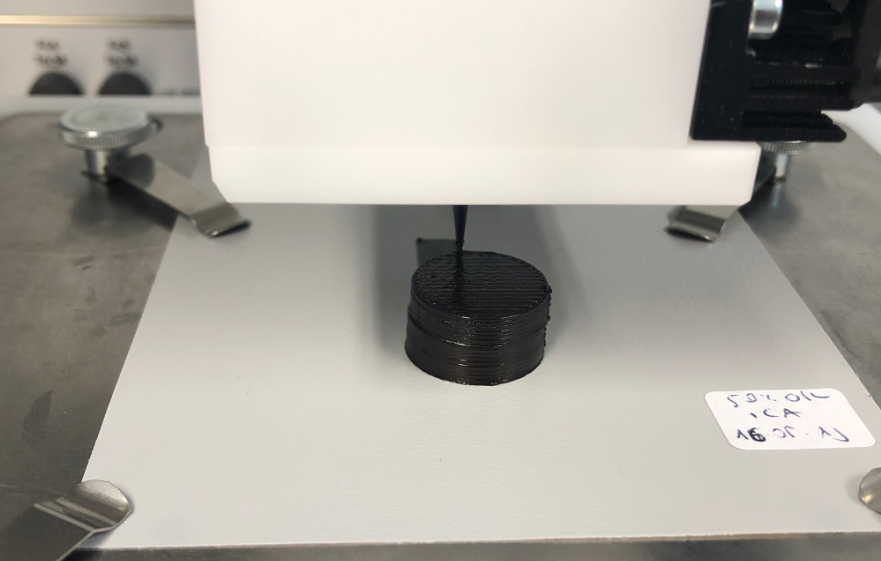The term forest scientist may be a new one for much of the general public, but it applies to the study of new materials for 3D printing in a very intriguing way. Composites lend to the infinite choices available, whether materials emerge from natural or synthetic sources. Now, a research team headed by Prof. Dr. Marie-Pierre Laborie from the Chair of Forest Biomaterials at the University of Freiburg has created a new wood-based biodegradable synthetic that can be developed into a viscous biopaste for 3D printing complex geometries. Proof of their study has recently been published in both Applied Bio Materials and Biomacromolecules regarding the details of their new composite.
Lignin is an organic polymer used in previous research studies too; for example, it has been mixed with nylon and carbon for enhanced printability, as well as with cellulose and starch to act as a binding agent. Laborie and her team recognized the potential of lignin as it strengthens the cell walls of plants, resulting in a stable woody structure that is ultimately “lignified.”
This evolutionary trait protects plants from the elements, and from bugs. Known as waste from paper production, it is usually burned as a bioenergy source. Laborie and her team began exploring better ways to use the raw material, studying previous research regarding the use of lignin for biopaste and the development of biosynthetics.

The biopaste used to print this cylinder in previous research consists of 50 percent lignin and 50 percent cellulose. (Image courtesy of Lisa Ebers)
While the authors do consider their new lignin composite as potentially suitable for “lightweight construction” applications, they report that additional research will be required first. Currently, they are experimenting with pure lignin made in a pilot biorefinery at the Fraunhofer Center for Chemical-Biotechnological Processes (CBP) in Leuna, a town in eastern Germany known for the production of chemicals.
“… whether the waste product from the paper industry can also be directly processed still has to be researched,” state the authors.
Other studies relied on chemical processing or experimenting with different materials. Some studies used lignin from beech trees, while others extracted it from different plants with varying material characteristics.
Research was initiated by the Sustainability Center Freiburg and the Fraunhofer Society, with research and 3D printing occurring with Prof. Dr. Christian Friedrich and Dr. Gopakumar Sivasankarapillai at the Freiburg Materials Research Center (FMF) of the University of Freiburg and with Dr. Gilberto Siqueira in the Swiss Federal Laboratories for Materials Testing and Research (EMPA) in Dübendorf, Switzerland.
[Source / Images: ScienceDaily; Phys Org; University of Freiburg]Subscribe to Our Email Newsletter
Stay up-to-date on all the latest news from the 3D printing industry and receive information and offers from third party vendors.
You May Also Like
Meet Xell, xolo’s Budget-Friendly Bioprinter for Labs
Building on its expertise in volumetric bioprinting, xolo has unveiled Xell. This compact bioprinter brings rapid fabrication of complex structures without visible layers to research labs at an unprecedented price....
Axolotl Biosciences Brings Biotech to the Forefront at Formnext 2024
Formnext 2024 is known as the world’s leading trade fair for industrial 3D printing, with towering machines and manufacturing giants filling its halls. Amid this industrial frenzy, Axolotl Biosciences, a...
BICO’s €26M Nanoscribe Sale Highlights Strategic Overhaul Under Forss
BICO (STO: BICO) announced its second divestiture since Maria Forss took over as President and CEO in November 2023. Following the sale of Ginolis last year, BICO has now entered...
3D Systems Pushes New Tech and Partnerships at Formnext
As one of the pioneering companies in additive manufacturing (AM), 3D Systems remains a key player to watch at Formnext 2024, where it is showcasing major partnerships, innovative technologies, and...




































